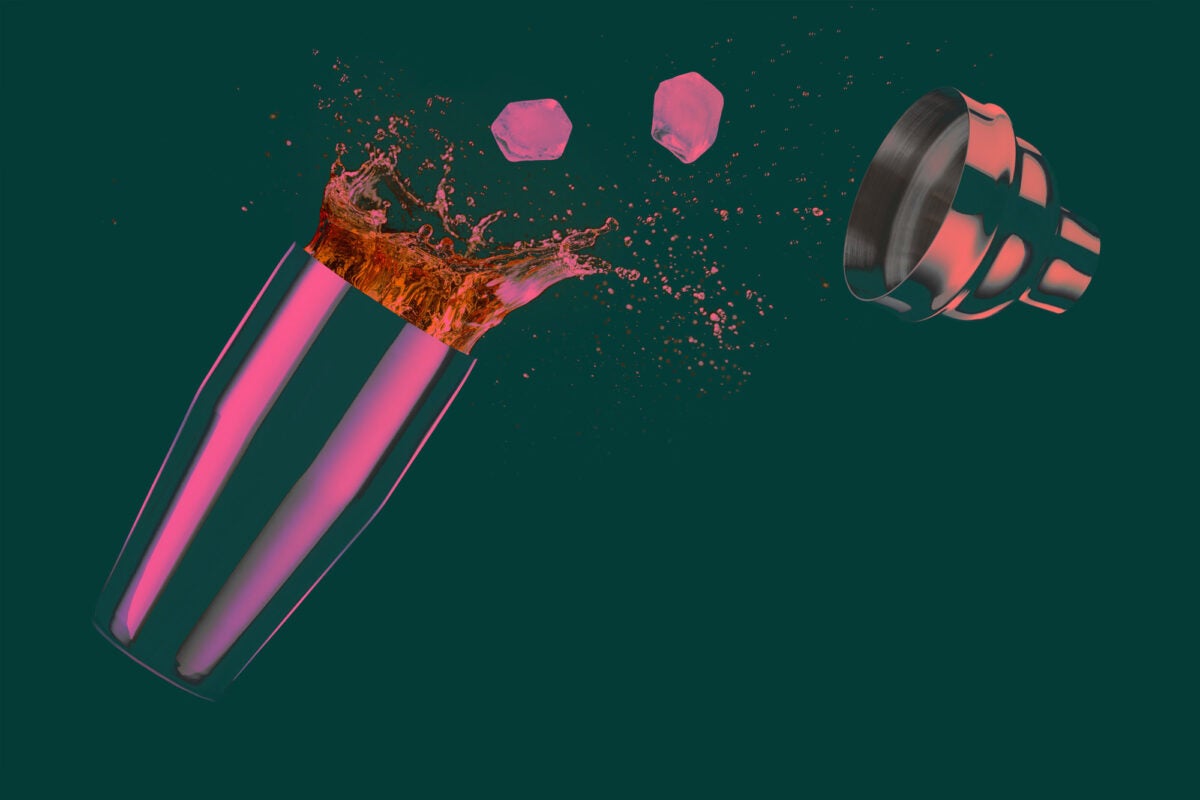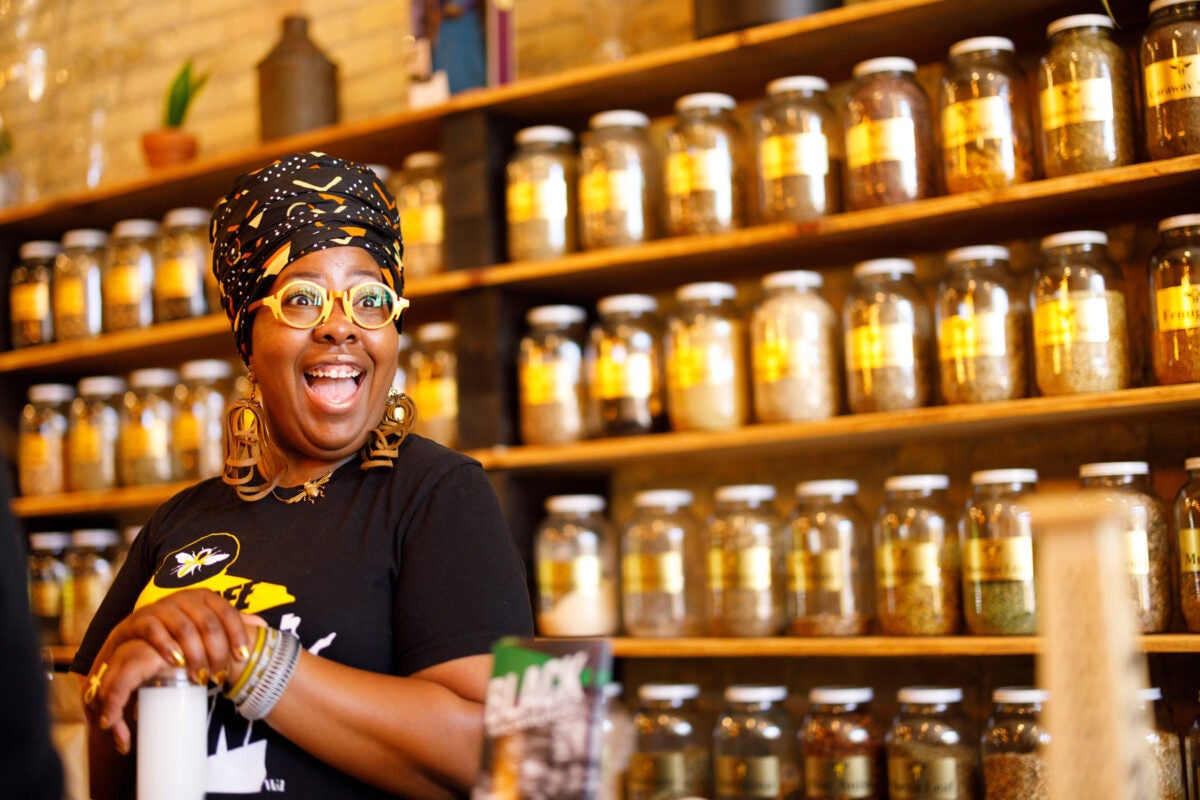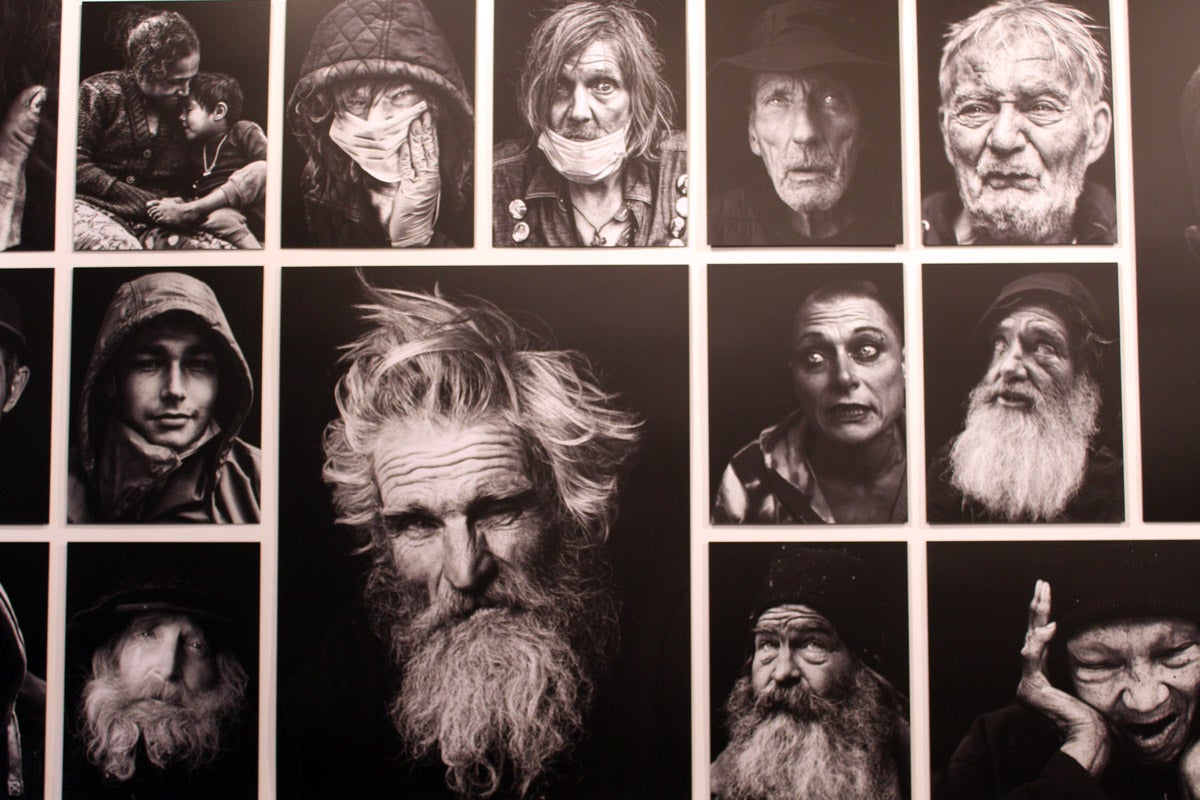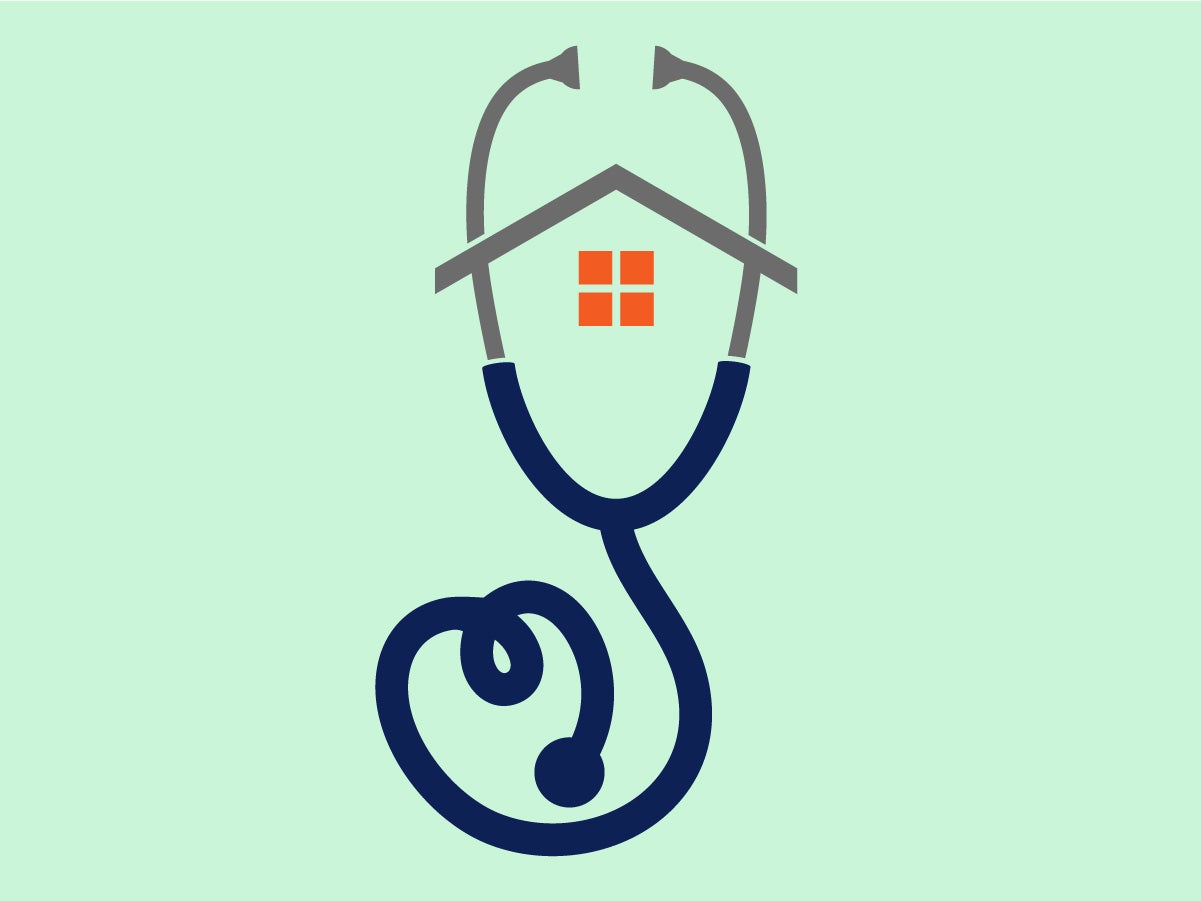
Feature
Bartender, make mine a mocktail
Angela Mallett owns a bar that doesn’t serve booze in a state labeled the drunkest in the United States. After her father died in 2019 of complications from excessive drinking, the Milwaukee entrepreneur added a no-alcohol bar to her HoneyBee Sage Wellness and Apothecary. She wanted to create a safe space for people who pursue healthier lifestyles. “That a lot of people can’t imagine having … an enjoyable evening without alcohol really speaks to the level of toxicity that we’ve created in our culture,” she says.
Sign up for Harvard Public Health
Delivered to your inbox weekly.
Even in the city that beer made famous, Mallett’s HoneyBee Sage may be on trend. Nearly 40 percent of U.S. respondents told the market researcher Mintel in 2023 they closely or occasionally “follow a sober-curious lifestyle”—reducing or eliminating their alcohol consumption. A recent Gallup Poll found 62 percent of U.S. adults under 35 said they drink, a 10 percent drop from two decades ago. (The overall percentage of Americans who drink has held roughly steady because more adults over 55 said they drink.) One-third of adults who avoid alcohol do so for health reasons, according to a 2022 Food Institute report—and 70 percent of young adults say they just aren’t interested in alcohol.

Angela Mallet at her no-alcohol bar and apothecary, HoneyBee Sage Wellness, in Milwaukee, Wisconsin.
Photo: Nick Collura
To be sure, drinkers still outnumber non-drinkers by two to one, but the reduction in drinking among young people “suggests there could be important cultural changes happening with regard to alcohol consumption,” says George F. Koob, director of the National Institute on Alcohol Abuse and Alcoholism. The changes correlate with a shift in attitudes toward liquor that began in 2013, when excessive drinking was officially labeled as a disorder in the Diagnostic and Statistical Manual of Mental Disorders.
Shifting patterns in alcohol consumption among young people could have wide-ranging public health effects. Alcohol is a Group 1 carcinogen, along with asbestos, radiation, and tobacco, and a risk factor for more than 200 kinds of health problems. Last January, the World Health Organization declared alcohol toxic even in moderation. The WHO has launched a world-wide initiative to promote a mix of taxes and price controls, which it finds to be the most effective and cost-efficient way to reduce drinking. “The health halo around even moderate alcohol consumption is falling off,” says Timothy Naimi, director of the Canadian Institute for Substance Abuse Research at the University of Victoria.
About time, some might say: In the United States, one in 10 people aged 12 or older have alcohol use disorder, and 12.1 percent of children live in a home with a parent who has a drinking problem, according to the National Institute on Alcohol Abuse and Alcoholism. An estimated 140,000 people die each year from alcohol-related causes, including suicide and vehicle crashes, as well as diseases stemming from chronic alcohol use. And then, Naimi notes, there are liquor’s steep social and public health costs, such as alcohol-fueled domestic and interpersonal violence, sexual assaults, child abuse and neglect, and fetal alcohol spectrum disorder.
Drinkers across the spectrum can change their lifestyle to drink less or become nondrinkers, says Katie Witkiewitz, director of the Center on Alcohol, Substance Abuse and Addictions at the University of New Mexico. Policy nudges help, she says, including limiting availability, levying higher taxes on alcohol, and enacting and enforcing restrictions on alcohol advertising and marketing. Taxes, in particular, deter the heaviest drinkers, whose alcohol abuse incurs the highest societal costs. But Witkiewitz says policies to address harms from alcohol overuse aren’t implemented very often. “We’re just not taxing alcohol proportional to its harms,” she says, meaning that “taxpayers are actually subsidizing people who drink [excessively].”
Alcohol taxes “are generally popular with the public, and can raise needed revenue for states,” says David Jernigan, professor of health law, policy, and management at Boston University School of Public Health. But alcohol industry lobbying often derails new taxes on drinking. Nevertheless, some states and municipalities are responding to concerns about the health consequences of drinking:
- In Baltimore, Maryland, residents of District 45 were concerned about violent crimes at liquor stores that children passed on their way to school. After a community meeting at a local police station, the district’s state senator, Cory McCray, introduced legislation shortening operating hours for 26 nearby liquor stores.
Data from September 2020 show a 50 percent drop in homicides compared with the year before, and a similar drop in violent crimes committed between 10 p.m. and 2 a.m.
- Live Healthy Miami Gardens (LHMG), an initiative led by the Health Foundation of South Florida and implemented by the City of Miami Gardens, aims to improves health outcomes in a community that is 97 percent non-White. “The alcohol industry has long been known to target communities of color with hyper-concentrated marketing and sales of high-risk alcohol products such as alcopops, malt liquor and fortified wine,” LHMG noted in its research summary. In fact, more than 70 percent of the city’s liquor stores sold substantial high-content alcohol products; in the neighboring White community, just 12 percent of liquor stores did. So the LHMG recommended restrictions on the sale hours and placement of high-alcohol products and increased enforcement of existing regulations limiting the overall availability of high-alcohol products and in-store advertising that promotes them.
- The 2020 National Survey on Drug Use and Health found Oregon had the nation’s sixth-highest rate of alcohol use disorder along with the lowest access to treatment of any state. In response, the Oregon Liquor and Cannabis Commission established a minimum price per fluid ounce for all distilled spirits sold in the state. The goal was to make low-price, high-alcohol content products less available to underaged and excessive and binge drinkers, while generating more money for the state. Since then, consumption of such products has dropped 14 percent, while increasing state revenue by two percent.
- In Wisconsin, where more than a quarter of residents drink excessively, a state-appointed working group made 61 recommendations in late 2021 for reducing and preventing excessive drinking. The Wisconsin Alcohol Policy Project, a nonprofit, is building databases to track local alcohol policies in more than 1,800 municipalities; to evaluate compliance with age restrictions on alcohol service; and to identify patterns that may suggest overserving.
- New Mexico leads the nation in alcohol-related deaths per capita. In 2023, after years of trying, lawmakers passed a tax increase of five cents a drink on beer, wine, and spirits sold in bars. The governor, however, vetoed it.
State and local regulatory efforts are still unusual, says Jernigan, but may accelerate as concerns about alcohol’s wide-ranging health harms rise. Chris Marshall was ahead of this trend. Five years ago, he opened the Sans Bar in Austin, Texas. Like Angela Mallet in Milwaukee, Marshall was motivated to open a no-alcohol bar by a death from excessive drinking; a patient he’d worked in his job as substance abuse clinician died. The death “changed something in me,” he says, “and I was determined to create a space where people who chose not to drink could find social support.” He saw loneliness as a crisis, one especially acute for people struggling with alcohol addiction, and hoped to demonstrate adult socializing doesn’t need to be centered around alcohol. Marshall says Sans Bar “does the thing you wish alcohol would do: give you that real sense of connection.”

Chris Marshall, owner of Sans Bar, a no-alcohol bar in Austin, Texas, talks with a customer.
Photo: Cassandria Alvarado
Marshall started ginning up drinks in his kitchen, such as a mock pina colada made with Seedlip Non Alcoholic Spirits, pineapple, coconut, and lime. When he held a mocktail pop-up in Austin in December 2017, only six people came “and four were relatives,” he says, but the other two were so enthusiastic he felt validated. To help address binge drinking by college students, Marshall collaborated with the University of Texas at Austin and served non-alcoholic drinks to more than 3,000 students and faculty members at 35 campus events in the spring of 2023.
Such efforts, experts say, are growing. But deaths from alcohol and alcohol-related diseases are still rising—an alarming trend given that the pandemic drove per capita consumption of alcohol at a faster rate between 2021 and 2023 than at any time in the last 50 years. “We’re simultaneously seeing a decrease in harmful drinking by some [people] and an increase in alcohol-related harms among others,” Koob says. Witkeiwitz, the University of New Mexico researcher, predicts the no-alcohol trend will continue, bringing “a great sea change in our culture from one that has always glamorized heavy drinking to one that is now celebrating reductions.” Such a trend will mean good things for public health, she says. “Any reductions in drinking are associated with improvements in health and functioning.”
Top image source: ~UserGI15966731 / iStock


